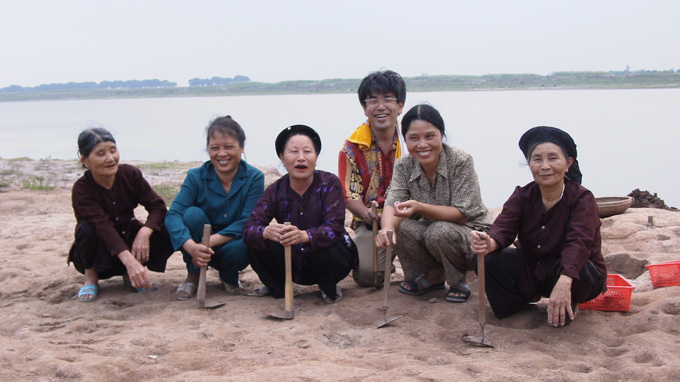Japanese archeology Ph.D holder Nishimura Masanari, who dedicated 23 years and made notable contributions to Vietnamese archeology, passed away in a road accident, aged 48, on his way from Hanoi to Hai Phong province to a new excavation site on June 9.
Nishi, as he’s intimately called within his archeological circle, was born and grew up in Shimonoseki city in Japan.
After graduating in archeology from Tokyo University, Nishimura came to Vietnam in an archeological cooperation program between Vietnam and Japan starting in 1990.
In 1998, he unearthed a piece of a brass drum mould which dated back to the 1st-3rd centuries. This was the first item of its kind excavated in Vietnam, and it shed new light on brass drums and serves as a key archive in the research on time-honored instruments.
Nishimura defended his Ph.D thesis in archeology in 2006 and had worked at the Vietnam Archeology Institute before passing away. He also founded the Foundation for Safeguarding the Underground Cultural Heritage in Southeast Asia.
Nishimura not only find his lifelong passion in Vietnamese antiques, but in Hanoi he also met a like-minded friend and the love of his life, Nishino Noriko, a Japanese post-graduate student in Vietnamese linguistics who soon switched to archeology.
The insatiable passion for Vietnamese antiques they shared soon brought them close together. The couple worked closely on several archeological projects.
They tied the knot in 2001 and Nishimura, whose Vietnamese name is Ly Van Sy, returned to Vietnam with his wife and two kids. The couple had worked and lived in their second home country ever since.
Destiny later drove the duo to the Kim Lan village in Hanoi’s Gia Lam district, near the Hong River, where they ended up spending the next 12 years digging for antiques and shedding new light on the village’s history.
The family has fostered a strong bond with villagers. Looking just like locals with their impeccable Vietnamese and plain looks, the couple took great delight in their rustic life, including local dishes and pastoral pleasures like bathing in the silt-laden waters of the Hong River.
Thanks to their painstaking, relentless effort, a glamorous ancient culture was brought back to life, with thousands of artifacts unearthed.
The artifacts, both broken and intact, depicted Kim Lan as a 2,000-year-old village, which thrived during the Ly (1009 – 1225) and Tran (1226 – 1400) reigns and was a major supplier of construction materials for the Thang Long citadel, Vietnam’s old capital.
Nishimura and his wife also discovered that many of these artifacts had been found in Japan and dated back to the 14th century, proving that Vietnamese handmade products had made their way as far as Japan.
The couple lead a simple, frugal life, but managed to raise funds to help establish the Kim Lan pottery museum, a local museum which boasts diverse and plentiful artifacts and activities.
Nishimura also took part in dozens of excavations in Vietnam and attended many international seminars on Vietnam, in which he always saved his best words for the country’s archeology.


















































